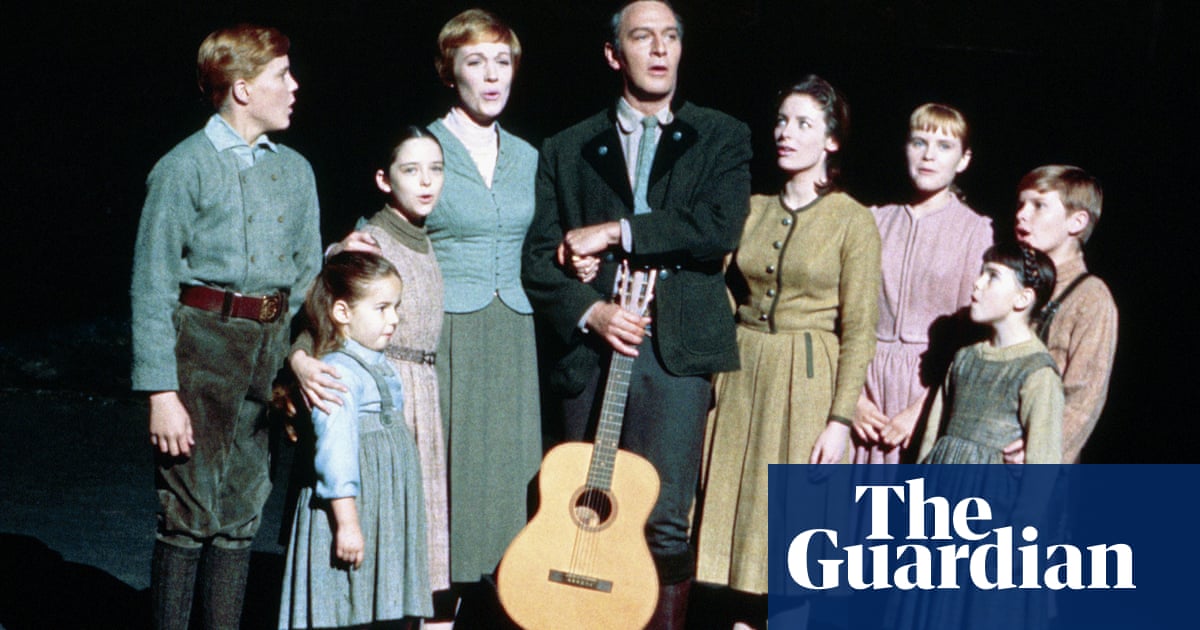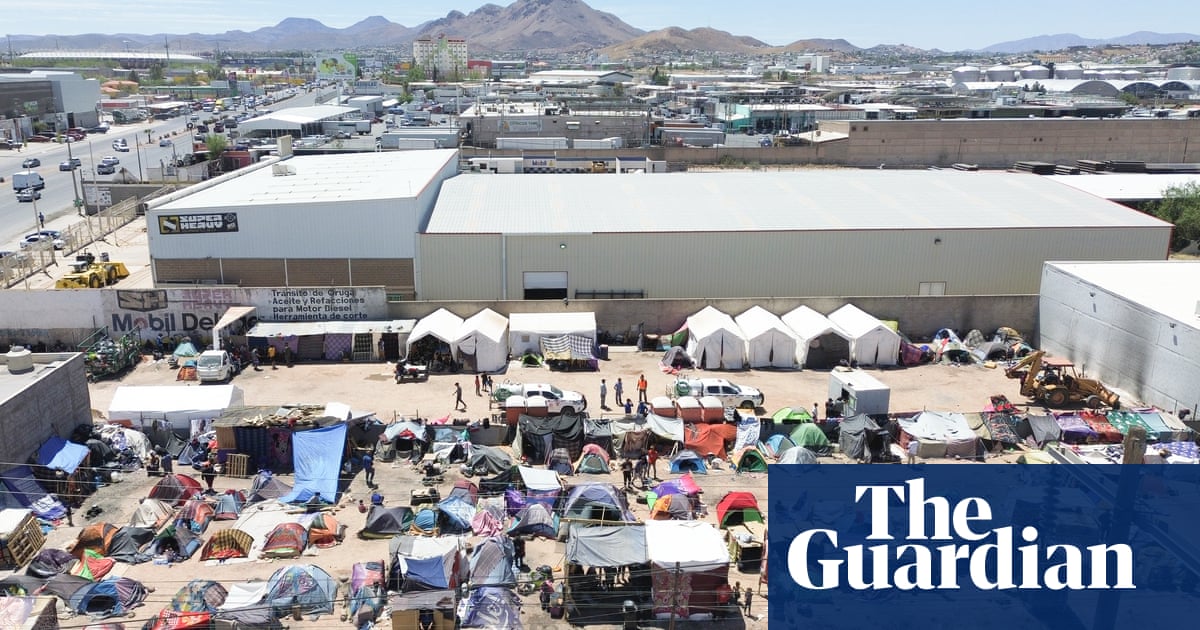
n most British or American documentaries about rock bands, the bad guys are the managers or record executives who steal the group’s money or force them to compromise their art. In the new Netflix docuseries Break It All, which covers the sprawling history of rock bands in Latin America, the bad guys far exceed that level of evil. “With the military junta in Argentina, we were facing real enemies,” said Nicolas Entel, who wrote the series. “In Chile, they were standing up to Pinochet. You can’t get a character that’s more evil than Pinochet.”
“People were put in jail for being musicians,” said Gustavo Santaolalla, a seminal figure in the Latin rock scene who served as a producer on the project. “So there’s tremendous context for this music.”
The result has given Break It All (or Rompan Todo in Spanish) a level of drama, depth and consequence few rock docs can match. Amid its dense, six-episode expanse, the show tells of “missing” or murdered musicians during the fascist regimes of the 60s, 70s and 80s, including Victor Jara in Chile; widespread censorship, including a decade-long ban on rock in Mexico in the 70s; and a steady characterization in the press of the bands as depraved subversives. At the same time, Latin America has managed to produce a virtual goldmine of guitar-driven bands since the 60s that, in Santaolalla’s view, “sometimes surpassed the content of rock that has been produced in the Anglo world”.
Yet, many of those groups have little or no profile outside Latin America – especially the foundational ones in the first two decades. Given the hundreds of great bands the region has produced, it’s no surprise that the creators of the series had to leave many out. According to Santaolalla, they concentrated on “bands that influenced other bands, not only in their own country but in others”.
The series starts in the early 60s when groups like Mexico’s Los Teen Tops and Uruguay’s Los Shakers largely imitated Anglo rock acts. But by the late 60s, bands like Chile’s Los Jaivas and Argentina’s Arco Iris found their own rhythms and inflections, some drawn from their local folkloric culture. “We realized that we didn’t only want to sing in our own language, we wanted to play in our own language,” said Santaolalla, who fronted Arco Iris. “This was rock of its own kind.”
While the series covers artists from many Latin countries, it concentrates on those from Mexico and Argentina. “In this context, Argentina is the UK and Mexico is the US,” Entel said.
Once the series progresses to the 90s and beyond, more bands from the region become better known outside of Latin America, including Mexico’s Café Tacuba and Colombia’s Aterciopelados. Santaolalla said that was because more acts started touring the US, encouraged by the increasing Latino demographics there, as well as the support of stars like Beck and David Byrne. “David Byrne made the statement that the future of rock resides not in England or the United States but in the third world,” said Santaolalla. “I believe at the front of that third world is Latin America.”
But if the future looks brighter for current bands from that region, the ones that birthed the movement remain obscure to many. Here’s a listening guide to the Latin rock acts from the 60s and 70s everyone should know:
Los Teen Tops
One of the first bands to translate rock’n’roll into Spanish, Los Teen Tops became a sensation in their native Mexico by covering the proven hits of seminal American rockers, from Elvis Presley to Little Richard. But it wasn’t all mimicry. They rewrote the songs’ lyrics and added their own inflections. In Los Teen’s hands, Little Richard’s rollicking Good Golly Miss Molly morphed into their zany La Plaga. Likewise, their take on Boney Maroney used Enrique Guzmán’s robust voice and the band’s sure rhythm to lend the song fresh character, in the process giving them a No 1 Mexican hit.
Los Shakers
While they tended to sing in English rather than Spanish, Los Shakers’ ability to re-create the effervescence of the early Beatles in their own compositions inspired a whole wave of new bands in their native Uruguay. The brothers behind the group, Hugo and Osvaldo Fattoruso, brainstormed Los Shakers after watching A Hard Day’s Night, going so far as to mimic the Fab Four’s shaggy haircuts and dapper suits. Their smash Break Everything became a Top 10 hit in Argentina, leading to a full invasion of Uruguayan bands in that country.
Los Saicos
One of the wildest garage bands of all time was born in 1964 in a nice middle-class section of Lima, Peru. Despite the polite surroundings, the band’s teen frontman, Edwin Flores, had a demonic voice that captured the joyous depravity of singles like Demolición. Think Surfin’ Bird by the Trashmen, but with an extra snarl.
Los Gatos
This Argentinian group, whose name translates as the Cats, provided a bridge between the Spanish-language rock of the mid-60s and the region’s later psychedelic forays. Their seminal hit, La Balsa, had the chugging Farfisa organ of garage-rock, as well the sort of sweet melody and wafting harmonies the set the Byrds in flight. Their 1967 breakthrough inspired an explosion of bands in Buenos Aires.
La Revolucion de Emiliano Zapata
By 1969, heavy rock had as deep an effect on bands south of the US border as it had up north. You can hear the change in the low-down beats and screaming guitars of this Mexican band. Their hit Nasty Sex had the swampy feel of Creedence Clearwater’s Born on the Bayou, deepened by Carlos Valle Ramos’ stinging guitar leads. Their track Melinda thrashed as hard as Live at Leeds-era Who, while La Ciudad Perdida flew as high as a Jefferson Airplane jam.
Los Jaivas
In the same way that prog bands in Europe drew on that continent’s classical creations, Chile’s Los Jaivas connected prog-rock to the folkloric music of the Andes. Their 1971 debut, El Volantín, used the flute and the charango to augment their raging guitars and pounding drums. While that combination helped make them a hit with Chilean youth, the pressures of life under the Pinochet regime drove them to flee to Argentina.
Arco Iris
One of South America’s most vaunted bands, Arco Iris swirled jazz, folk, psych-rock and Latin music into a brilliant collage. Not only was this band, fronted by Gustavo Santaollalla, the first big rock band to make significant use of Argentinian folk styles, they came armed with own attention-getting philosophy, based on an ascetic lifestyle that even eschewed sex. In the process, they helped found what became known as Argentina’s rock nacional movement.
Almendra
Luis Alberto Spinetta was just 18 years old when he helped form Almendra, but on their self-titled, 1969 debut, his genius was already plain. With his rapturous voice, unbound melodies and poetic lyrics, Spinetta had the visionary scope of artists like Tim Buckley and Van Morrison. Small wonder he and his band became one of Argentina’s most respected groups. They were also one of the most broad-minded, bridging folk, jazz, tango, prog and more. By their second album, Almendra II, they rocked far harder and the whole group became equally important to the writing and playing, highlighted by the wildly angular guitar leads of Edelmiro Molinari. Though Almendra fractured soon after its release, its members went on to form a host of other key Latin acts.
Manal
South America’s ultimate power trio, Manal used their lean lineup to echo the thundering blues-rock of acts like Cream and Jimi Hendrix’s Experience. Instead of letting the guitar dominate, however, this Argentinean group focused on the lead vocals of drummer Javier Martínez, whose meaty voice had the texture of soul.
Gabriela
Just as in the US and UK, men in Latin America tended to dominate early rock. One of the few exceptions was Gabriela Parodi, who fronted her own band in Argentina, where she released her galvanizing debut in 1972. Gabriela’s agile voice proved adaptable to rousing rockers and elegant ballads. Working in her native Argentina and later in the US, Gabriela has maintained a varied career that paved the way for important women in Latin rock, including Andrea Echeverri of Aterciopelados.
Break It All: The History of Rock in Latin America is now available on Netflix











